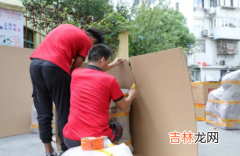perfectly good food is thrown away—from “ugly"(but quite eatable)vegetables rejected by
grocers to large amounts of uneaten dishes thrown into restaurant garbage cans.
Producing food that no one eats wastes the water, fuel, and other resources used to grow it.
That makes food waste an environmental problem. In fact, Royte writes, "if food waste were a
country, it would be the third largest producer of greenhouse gases in the world."
If that's hard to understand, let's keep it as simple as the arugula at the back of my refrigerator.
Mike Curtin sees my arugula story all the time — but for him, it's more like 12 bones of donated
strawberries nearing their last days. Curtin is CEO of DC Central Kitchen in Washington, D.C.,
which recovers food and turns it into healthy meals. Last year it recovered more than 807,500
pounds of food by taking donations and collecting blemished(有瑕疵的)produce that otherwise
would have rotted in fields. And the strawberries? Volunteers will wash, cut, and freeze or dry them
for use in meals down the road.
Such methods seem obvious, yet so often we just don't think. "Everyone can play a part in
reducing waste, whether by not purchasing more food than necessary in your weekly shopping or
by asking restaurants to not include the side dish you won't eat," Curtin says.
24. What does the author want to show by telling the arugula story?
A. We pay little attention to food waste.
B. We waste food unintentionally at times.
C. We waste more vegetables than meat.
D. We have good reasons for wasting food.
25. What is a consequence of food waste according to the test?
A. Moral decline.
B. Environmental harm.
C. Energy shortage.
D. Worldwide starvation.
26. What does Curtin's company do?
A. It produces kitchen equipment.
B. It turns rotten arugula into clean fuel.
C. It helps local farmers grow fruits
D. It makes meals out of unwanted food.
27. What does Curtin suggest people do?
A. Buy only what is needed.
B. Reduce food consumption.
C. Go shopping once a week.
D. Eat in restaurants less often.
C
The elderly residents(居民)in care homes in London are being given hens to look after to
stop them feeling lonely.
The project was dreamed up by a local charity(慈善组织)to reduce loneliness and improve
elderly people's wellbeing, It is also being used to help patients suffering dementia, a serious illness
of the mind. Staff in care homes have reported a reduction in the use of medicine where hens are inuse.
Among those taking part in the project is 80-year-old Ruth Xavier. She said: “I used to keep
hens when I was younger and had to prepare their breakfast each morning before I went to school.
"I like the project a lot. I am down there in my wheelchair in the morning letting the hens out
and down there again at night to see they've gone to bed.
"It's good to have a different focus. People have been bringing their children in to see the hens
and residents come and sit outside to watch them. I'm enjoying the creative activities, and it feels
great to have done something useful."
There are now 700 elderly people looking after hens in 20 care homes in the North East, and
the charity has been given financial support to roll it out countrywide.
Wendy Wilson, extra care manager at 60 Penfold Street, one of the first to embark on the
project, said: "Residents really welcome the idea of the project and the creative sessions. We are
looking forward to the benefits and fun the project can bring to people here."
Lynn Lewis, director of Notting Hill Pathways, said: "We are happy to be taking part in the
project. It will really help connect our residents through a shared interest and creative activities."
经验总结扩展阅读
- 2022年新高考全国二卷数学试卷
- 2022年天津高考数学试卷
- 文科 2022年全国乙卷高考数学试卷及答案
- 理科 2022年全国乙卷高考数学试卷及答案
- ?2022年8月20日宜安装新门吗 2022年8适合安门的日子有几天
- 2022高考报完提前批还可以报普通批吗 高考志愿报提前批容易被录取吗
- 购买燃油车今年有补贴吗2022 燃油补贴是按照什么标准发放
- 2022高考本科分数线差几分可以填征集志愿或者补报吗 高考本科报考有哪些要注意的
- 2022高考怎么填志愿才不浪费一分 如何填高考志愿容易被录取
- 2022高考报志愿刚好在分数线上会不会录取 高考压线报考有希望吗

















